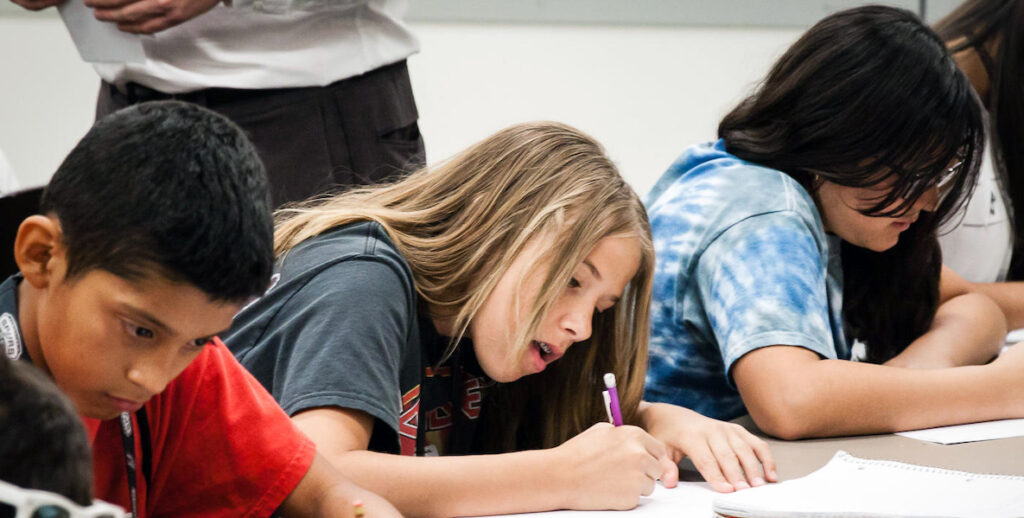It’s fun but also telling that the school Elaine Maimon chose to celebrate in her December 28 Citizen commentary is a fictional one featured in the sitcom Abbott Elementary. Today’s students need school leaders and policy makers to focus on facts, not fiction.
Education advocates need to move beyond the myths that animate different positions and come to terms with the core facts that got schools in Philadelphia and across the nation into their current state. Only then can the close coordination and communication Maimon calls for truly take root.
Like many advocates, Maimon is quick to cite Philadelphia’s “inadequate” public school funding. This label gets thrown around a lot, almost always without context. Readers deserve more specificity: inadequate in relation to what?
Do public school teachers get paid too little? Absolutely. Is this a main culprit in America’s stagnated educational progress, as skilled professionals have been lured away from teaching by higher paying careers? Almost certainly. Are charter schools the reason? Far, far from it.
Philadelphia public schools receive more money per pupil ($18,800) than both the state ($15,331) and national ($15,588) average. They spend more money per pupil than schools in all but four of the nations in the Organization for Economic Cooperation and Development (Luxembourg, Norway, Austria and Iceland).
Maimon goes on to describe a charter school as “better funded.” The charter school funding formula enshrined in Pennsylvania state law ensures that public charter schools receive 10 percent to 20 percent less funding per pupil than the school district in which they operate, so this too is a myth.
But perhaps the biggest myth is the one Maimon implies. She essentially makes the claim that the low teacher salaries and poorly maintained facilities found in district-run public schools are the fault of charter schools. Here are the facts.
From 1970 to 2020, public education spending in the United States has increased by twice the rate of inflation. Per-pupil spending has increased from $7,334 to $14,570 on an inflation-adjusted basis, according to data compiled by the National Center for Education Statistics. Teacher salaries, on the other hand, have increased by slightly less than the inflation rate over those 50 years.
The United States has dramatically increased education spending on an inflation adjusted basis — but teachers have not seen this increase in their pay. Nor have the aging facilities found in Philadelphia’s public-school system been the beneficiaries. Why not? The increase largely has gone to expanding the number of public school employees.
The crisis that lies ahead for public schools is that higher overall inflation is likely to make the sluggish salary growth in the teaching profession look even less attractive to new and veteran teachers alike. Many states already are struggling with acute teacher shortages.
From 1970 to 2015, total public education enrollment in the United States rose just 10 percent, from 45.9 million to 50.5 million. During that same period, the number of teachers increased by 56 percent, as many schools sought to lower class sizes, and the number of non-teaching personnel increased by 140 percent.
Today there are more non-teaching personnel than teachers in America’s public schools. The same is true in the School District of Philadelphia, where there were 8,765 teachers and 11,296 non-teaching personnel last school year.
Do public school teachers get paid too little in Philadelphia and elsewhere? Absolutely. Is this a main culprit in America’s stagnated educational progress, as skilled professionals have been lured away from teaching by higher paying careers? Almost certainly. Are charter schools the reason? Far, far from it.
Philly public schools and those in many states, urged on by teachers and other staff unions, have prioritized the hiring of new personnel over paying teachers well or attending to the needs of aging facilities.
An honest assessment of how we got here would consider that charter schools may only have come into being as an antidote to the very intentional policy decision to prioritize the expansion of schools’ headcount over teacher quality (and to the school district seniority policies that tended to place the least qualified teachers in the neediest schools).
The crisis that lies ahead for public schools is that higher overall inflation is likely to make the sluggish salary growth in the teaching profession look even less attractive to new and veteran teachers alike. Many states already are struggling with acute teacher shortages.
Until policy makers acknowledge the realities caused by our nation’s public policy choices, our schools are unlikely to meet the needs of students, families and communities.
Mark Gleason is a partner at The Drexel Fund, an education nonprofit. Previously he was executive director of the Philadelphia School Partnership (now called Elevate 215) and a board member of a public school district in northern New Jersey.
The Citizen welcomes guest commentary from community members who stipulate to the best of their ability that it is fact-based and non-defamatory.

